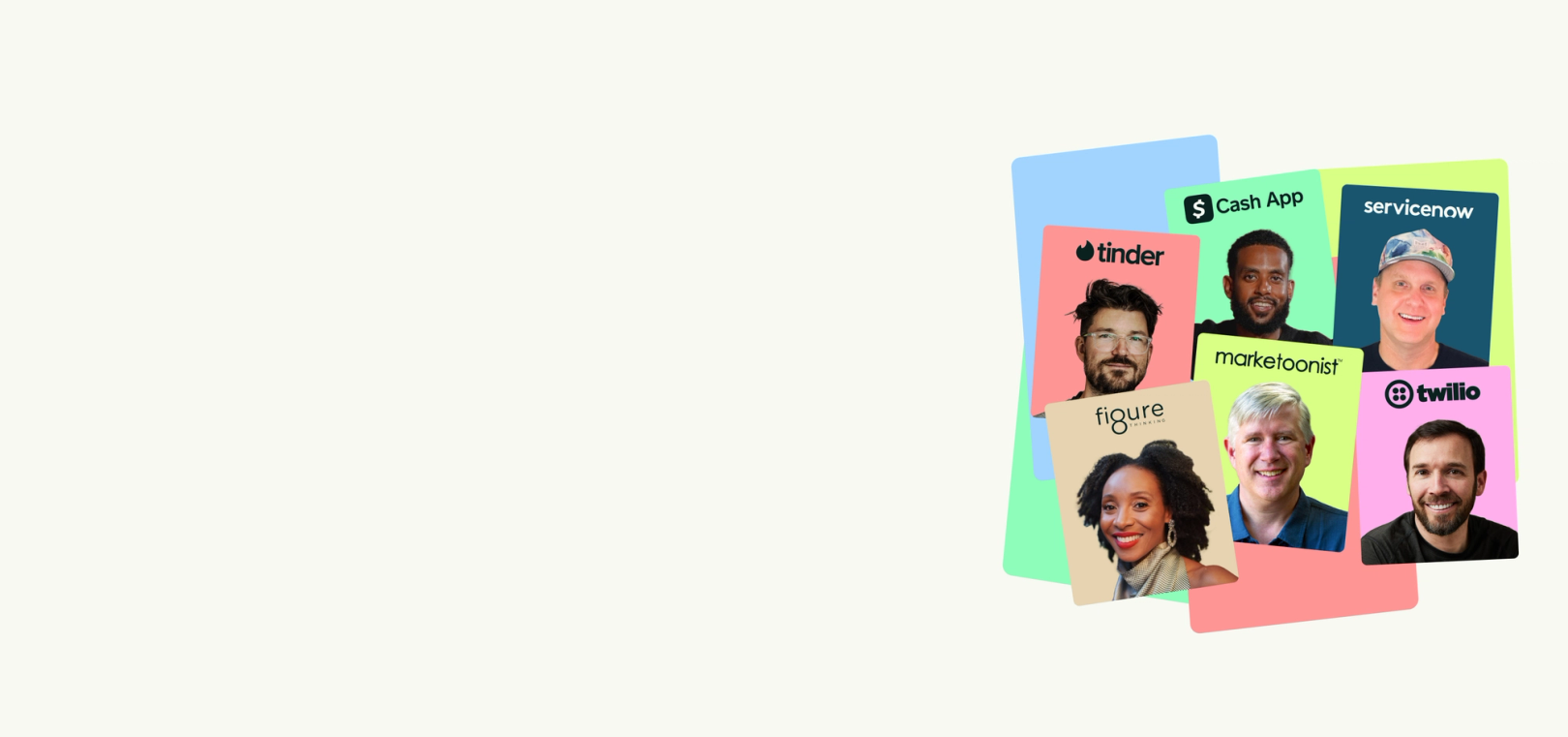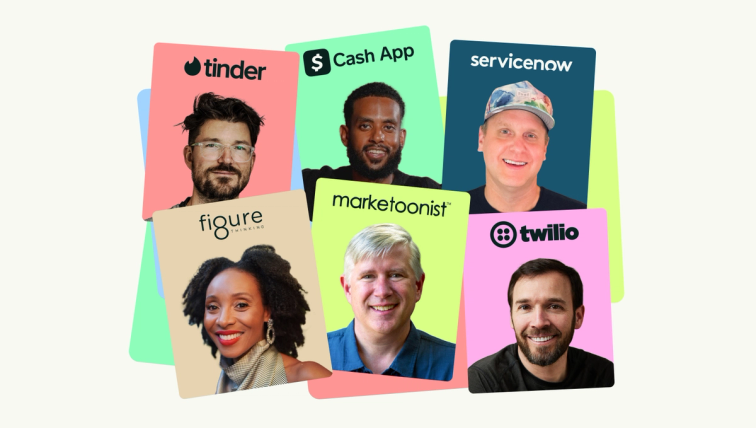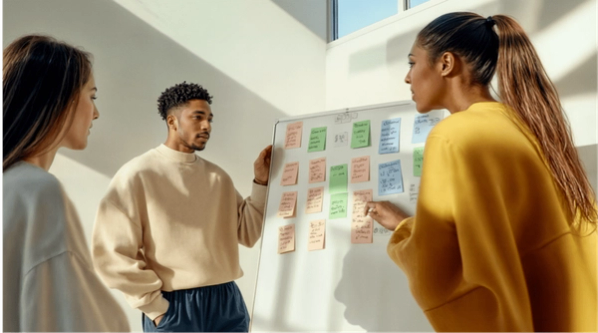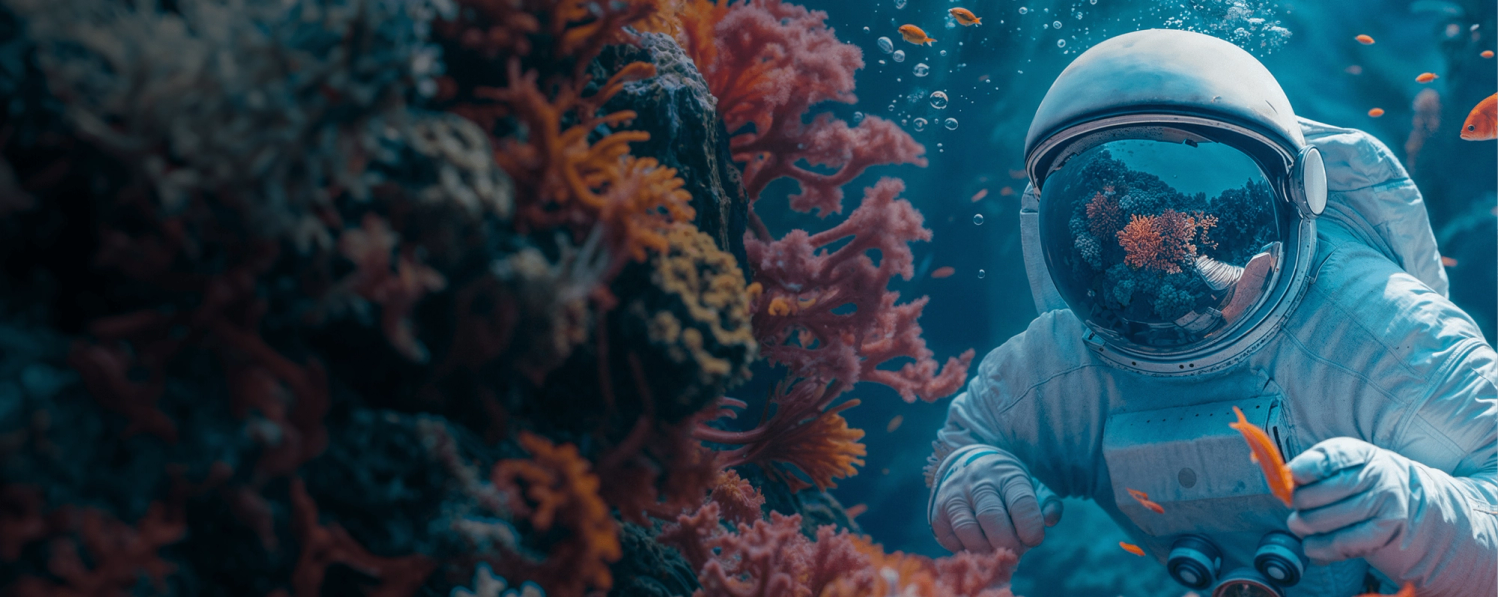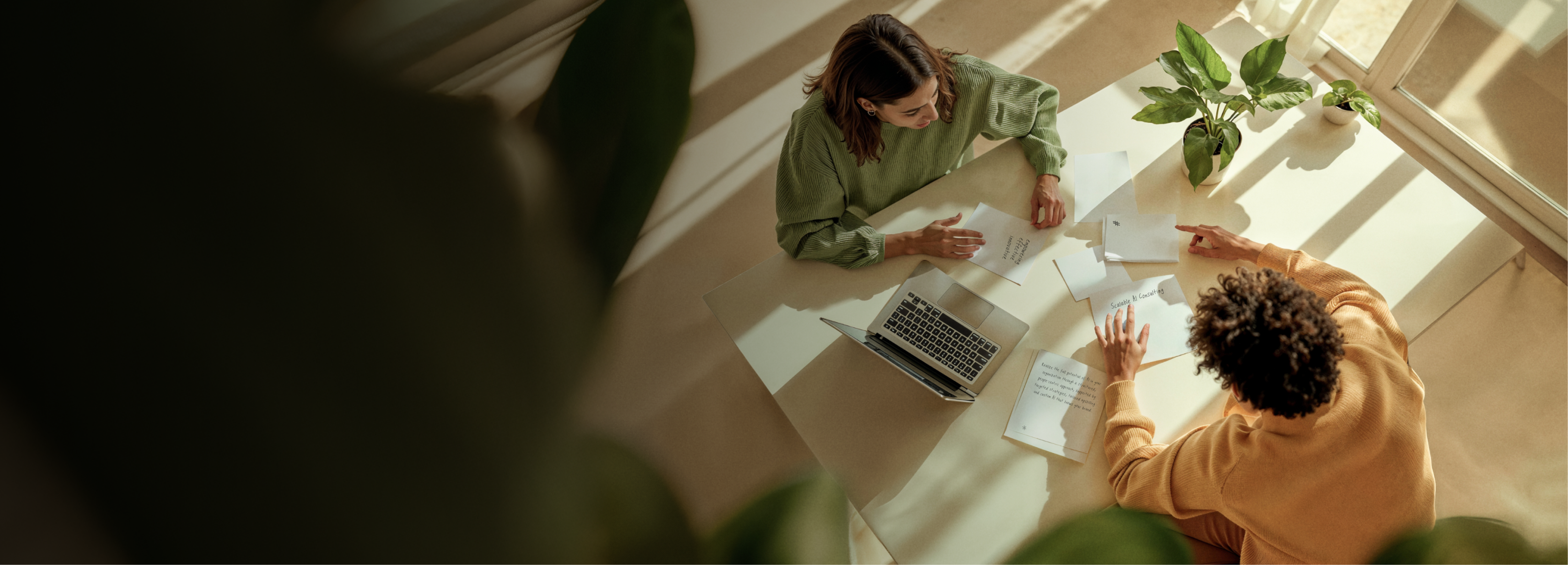
It’s all too common for creative demand to outstrip capacity, leaving design leaders to deal with overflowing pipelines and burnt-out teams. But there are solutions to scaling creative output—it all starts with understanding your team’s skills, gaps and capacity, so you can choose the right solutions and get off that hamster wheel!
Your creative team is running chronically late. The escalations—missed deadlines, delayed projects and stakeholder complaints—keep piling up.
The signals are clear: It's time to scale your team.
How? Mapping out your current team’s skills and capacity is a good place to start. Equipped with a clear picture of the state of your team, you’ll be able to identify the biggest gaps, plan for the future and set yourself up for scale.
Chances are, you need to hire. But there might also be a place for a solution like outsourcing to relieve immediate pressure and support your in-house creative team in the long run. Decisions, decisions. The following framework is designed to help.
Walk through this simple step-by-step process to build a design team in a systematic, scalable way... and walk away with a team empowered to be nimble, drive growth, and ultimately, demonstrate the value of creative throughout the business.
Step 1—Assess Your Team’s Current Status
As we’ve established, scaling your creative team starts with assessing where you are, where you need to go and how you're going to get there. As both a professional and a visual person, you’ll also want a clean, effective way to present the information. Say no more.
👉Grab a copy of this template.
Building a skills matrix helps you evaluate your team’s current roles, design skills and production capacity. Bear with me on the spreadsheet. Think of it as a simple visual way to frame your decision-making process.
Pat, a creative director at a high-growth tech company, has mapped out the creative team’s current skills and the competencies they plan to add.
At the top of the table, list your current employees and their roles. Along the side, list the design and creative skills each team member provides.
Below the existing skill sets, add the areas of expertise you’ll need to bring future company plans to fruition. Use Xs to mark the design services you have on hand and highlight gaps with shading.
When you're done, it'll be easy to see—at a glance—where your team is stacked for skills and where they may need support. But, to hone in on the greatest needs, you'll also want to consider capacity and performance. Speaking of which...
Step 2—Dig Deeper Into Capacity and Performance
Looking at capacity and performance lets you get even more granular in identifying and quantifying gaps.
Current and Future Capacity
Your creative team’s capacity isn’t just about how much they’re currently doing, it’s also about how much they’re asked to do, as well as what’s coming next.
Gauging your current and future capacity sheds light on which creative skills you’re using the most today… and which ones you’ll need most tomorrow.
For instance, if you’re at or exceeding your maximum workload for video and the demand for these services is only going to increase, you’ll have to find ways to fill these gaps.
By identifying current and future capacity requirements, Pat can determine which existing capabilities will need to be bolstered. In this example, any existing or future creative skills with demand that's expected to increase have been highlighted.
Performance
In addition to capacity, looking at the overall performance of your team in different creative areas can help make a case for filling specific skill gaps. Plus, as you scale, you’ll want to ensure you’re not only producing more creative, but that you’re maintaining or improving performance.
To examine which areas you excel in (and which ones could use some work), consider factors like quality, effectiveness and efficiency.
Assessing performance gives Pat the opportunity to see additional opportunities for improvement. For instance, there's room to advance the quality, effectiveness and efficiency of video concepting, production and editing.
Creative quality
Beauty’s in the eye of the beholder, right? Well, in this case, it’s more than just aesthetics. It’s about how consistently you’re hitting the standards you set. If you’re constantly hitting the high mark, keep doing what you’re doing. If you’re punching below your grade, make it a point to figure out why.
Creative performance (aka results)
What kind of results are your creative assets delivering out in the wild? For the purposes of this exercise, there’s no need to get into the nitty gritty metrics of each campaign or project. An informed estimate of general effectiveness is all you need to get a sense for strengths and weaknesses in specific creative areas.
Overall efficiency
How well are you doing at actually producing creative? Are you losing time due to unclear briefs or broken communication channels? How many rounds of revisions do assets require on average? Is there room for improvement in your processes? (Or, are there simply so many requests that the burnout pace of keeping up is what’s slowing you down?)
Step 3—Zap the Gaps
Now that you’ve completed your matrix, as you review it, you’ll start seeing a few revealing patterns.
Signs you have a skill and/or capacity gap include:
No one likes missed deadlines or, worse, missed opportunities. Once you know where your weaknesses lie, you can start finding ways to fill the voids.
Should you hire or outsource?
It’s the chicken vs. egg argument anyone leading a creative team faces.
Hiring gives you a team member who’ll develop a strong knowledge of your brand and your business. But, one human can only provide X amount of capacity and you can never fully predict what the future will hold.
You also have to allow for the time and resources it takes to attract, train and retain creative talent, taking into account:
- The average cost for a mid-level design lead is $86,530.
- The average time to hire is 44 days combined with 90 days of onboarding is 134 days, nearly 4.5 months.
- Turnover can cost up to 4X the employee’s original salary.
Outsourcing solves for when your team is at capacity and you need more immediate creative support. It may also make sense if there’s a specific project or type of work that you can't do in-house, but don’t have a case to hire for yet. As you evaluate your options, consider:
- Freelancers are a 1:1 solution—Just like employees, individual freelancers have specialized areas of expertise and a fixed amount of bandwidth.
- Agencies are a one-to-many solution—Agencies and their teams bring you a wider range of expertise; however, their capacity is also limited.
- Creative-as-a-Service (CaaS) is an all-in-one solution—Bringing together dedicated project management, a global network of top talent and a comprehensive range of creative services.
In reality, 86% of in-house teams do both—build a strong in-house team and work with trusted outsourced design partners. This type of hybrid approach works well for brands, like Shopify, Amazon and AEI Consultants, who need greater speed and agility to keep up with growth.
When should you hire?
Of course, there are a ton of factors that will play into this answer, like whether you have the budget, time and resources to support the hiring process. But based on today’s exercise, here are a few simple cues that indicate a hiring need:
- You’ve identified a skill gap
- You know the need for this skill will only grow
- And it’s in a strategic area your company is relying on
When should you outsource?
Again, factors like budget, time constraints and immediate needs will play into this decision. But keeping things simple, here’s how you might come to the conclusion outsourcing is the right solution for you:
- You've identified a skill gap
- You know you have an immediate need for this skill
- But it may not be in a strategic area you definitely need in-house
👉Help wanted? Check out Superside's resume.
Step 4—Make Your Business Case
You’ve got your plan, but you also need to be able to communicate the how and why to your team, stakeholders and leadership.
Earn bonus points: Including timelines and costs provides further clarity, so you can get your budget green-lit. (And give your creative team a lift!)
With a goal to increase the ability to concept, produce and edit video, Pat will hire a video production assistant and use outsourcing to help scale the company’s video efforts. Other skill and capacity gaps will be covered by outsourcing as there’s no clear role for a social media illustrator, motion designer, AR/3D expert. Pat also added cost and timing details for greater transparency.
You can also share the reasons you're keeping upcoming projects in-house, outsourcing them or doing both. For example, if there’s an urgent brand video that needs to be produced, your team is at capacity and there�’s no time to hire, you would outsource to a trusted partner to deliver the best results in a timely manner.
Example: A simple way to present the rationale for either keeping upcoming creative projects in-house or outsourcing.
Similarly, you can explain you’re keeping a brand launch in-house because it requires a significant amount of internal knowledge. However, it makes the most sense to outsource in order to experiment with AR/3D and develop generative AI, rather than rush to staff these skills.
Step 5—KISS: Keep it Simple and Scale
You've got this!
Scaling is never simple, but assessing your creative team’s strengths, identifying gaps and future-proofing for your company’s needs can be. Just run through this exercise, and you’ll have an ace up your sleeve when securing leadership’s support.
And hey, your hiring plan may take months to execute… but with a strong case (and need) for certain skills, you can get a head start on gap-filling with a flexible outsourced partner like Superside—and ensure the creative keeps flowing on time, on strategy and on budget.
One last fact: 92% of Superside customers would be somewhat or very disappointed if they had to stop working together.
See the clip below to learn how Superside and other in-house teams, like Reddit, have scaled creative with Superside—and why hybrid relationships are so powerful.








